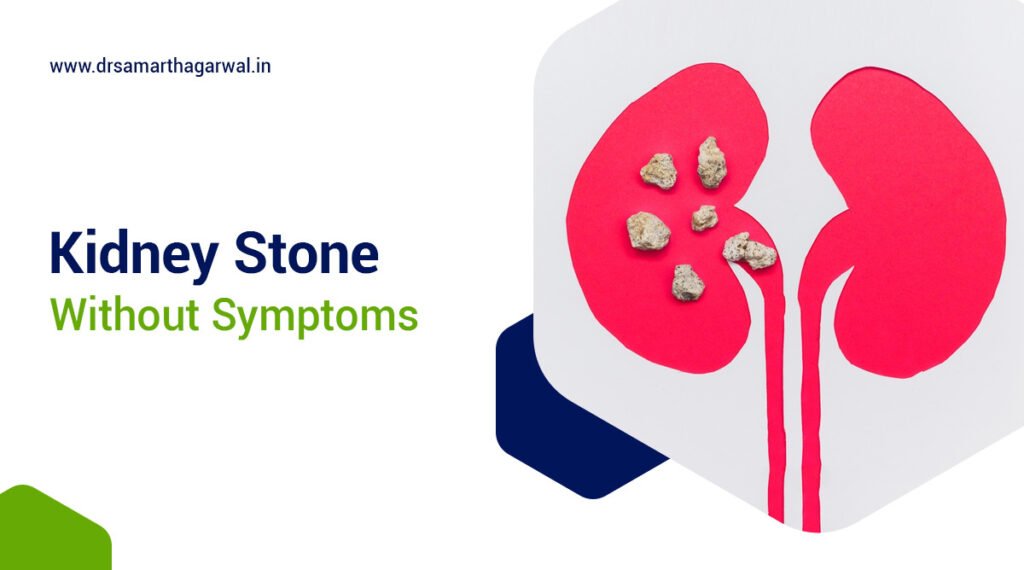Kidney cancer, also known as renal cell carcinoma, is a type of cancer that forms in the lining of the tubules in the kidney. Early-stage kidney cancer often has no symptoms, but as the condition progression can lead to a range of signs. This article discusses the stage at which kidney cancer begins to spread and the potential impacts on a person’s health.
The various stages of kidney cancer represent the extent of the disease and guide treatment decisions. The primary staging system for kidney cancer consists of the TNM classification (Tumor, Node, Metastasis) and the stage grouping (I-IV). The stage indicates the size of the tumor, the presence of cancer cells in nearby lymph nodes, and the spread to distant organs.
At What Stage Does Kidney Cancer Spread?
Kidney cancer spreads in stages, with stage I being the earliest and stage IV the most advanced.
The following details explain the stages of kidney cancer:
- Stage I: Cancer is confined to the kidney and is less than 7 cm in size. No cancerous cells are present in the nearby lymph nodes or other organs.
- Stage II: The tumor is larger than 7 cm but still confined to the kidney, or it has grown into major veins near the kidney. There are no cancerous cells found in the nearby lymph nodes or other organs.
- Stage III: Cancer has spread to the nearby lymph nodes (N1) but has not reached distant lymph nodes or other organs (M0). The tumor may also be any size and have grown into the fatty tissue that surrounds the kidney.
- Stage IV: Cancer has spread to distant lymph nodes (N2), to other organs such as the lungs or bones (M1a), or both (M1b). The size of the primary tumor does not influence the stage IV designation in this case.
Understanding these stages helps in planning effective treatment strategies for kidney cancer. It is crucial to consult a healthcare provider for a comprehensive evaluation and customized treatment plan. Early detection, as with all cancers, leads to better treatment outcomes.
What are the treatment options for Kidney Cancer?
Learn about the diverse array of treatment options available for kidney cancer in this comprehensive list. From surgical interventions aimed at removing cancerous tissue to advanced therapies targeting specific abnormalities within cancer cells, explore the various approaches to managing kidney cancer at different stages.
Gain insights into prognosis and treatment considerations, empowering patients and caregivers with valuable information for informed decision-making.
- Surgery:
- Surgeons aim to remove as much kidney cancer as possible.
- Partial nephrectomy preserves healthy kidney tissue by removing only the tumor.
- Radical nephrectomy involves removing the entire kidney and surrounding tissues if necessary.
- Nonsurgical Treatments:
- Cryoablation freezes cancer cells using a special needle.
- Radiofrequency ablation heats cancer cells through a probe, destroying them.
- Advanced and Recurrent Kidney Cancer Treatments:
- Surgery: Removal of as much cancer as possible, even if complete removal isn’t feasible.
- Targeted Therapy: Focuses on specific abnormalities within cancer cells to induce cell death.
- Immunotherapy: Utilizes the body’s immune system to fight cancer by interfering with cancer cells’ ability to hide.
- Radiation Therapy: Kills cancer cells with high-energy beams, often used to control or reduce symptoms in advanced cases.
- Clinical Trials: Offer innovative treatments, assessing safety, effectiveness, prevention, or detection methods.
- Prognosis and Treatment Considerations:
- Prognosis depends on the cancer stage at diagnosis.
- For early-stage disease, prognosis is typically excellent with the possibility of cure.
- Later-stage patients have access to various treatments, potentially extending life significantly.
- Treatment decisions consider factors like overall health, cancer type and stage, spread, and patient preferences.
What are the signs kidney cancer has spread?
The following are some common symptoms and potential indicators of kidney cancer, including suspicious physical findings and less noticeable signs. These may include visible or undetectable blood in the urine, kidney lumps or masses, flank pain, fatigue, poor appetite, low-grade fever, a general feeling of malaise, high blood pressure, anemia, high calcium levels, bone pain, and metastasis to other organs.
- Blood in your urine (hematuria): One of the common signs of kidney cancer, it is the presence of blood in your urine, which may be visible or only detectable with a urine test.
- Kidney lump or mass: A lump or mass in your kidney area can be an indication of a kidney tumor, which could be cancerous.
- Flank pain: Persistent pain in the lower back or side near the kidneys might be a symptom of kidney cancer, often referred to as flank pain.
- Fatigue: Feeling tired, weak, or lacking energy is a frequent symptom associated with kidney cancer.
- Poor appetite: A decreased appetite and weight loss are also common symptoms, which might be related to feeling unwell or the presence of a growing tumor.
- Low-grade fever: Kidney cancer can sometimes cause a low-grade fever, as an indirect sign of the body’s inflammatory response.
- General feeling of being unwell: A vague sensation of not feeling well is common among patients with kidney cancer.
- High blood pressure (hypertension): While the relationship is not always direct, having high blood pressure can increase the risk factor for kidney cancer.
- Anemia: A condition characterized by a lower-than-normal number of red blood cells can develop due to kidney cancer, leading to symptoms like fatigue and weakness.
- High calcium levels (hypercalcemia): In some cases, kidney cancer can produce a hormone that causes an increase in calcium levels in your body.
When kidney cancer progresses, it may metastasize, leading to more advanced symptoms such as:
- Bone pain: Cancer that has spread to the bones can cause various painful symptoms, including bone pain.
- Metastasis: Kidney cancer cells can spread to other organs, such as the liver, lungs, and brain, leading to visible or possible symptoms related to those organs.
How long can you live with kidney cancer that has spread?
Kidney cancer survival rates depend on various factors such as the stage at diagnosis, overall health, and the effectiveness of treatment.
According to the American Cancer Society, the 5-year relative survival rate for stage 4 kidney cancer is 17%. This percentage indicates the number of people surviving for at least five years after the initial diagnosis.
Medical News Today cites an average kidney cancer growth rate of 0.3 centimeters (cm) per year; however, growth patterns can vary significantly among individuals.
Other factors affecting the outlook for patients with advanced kidney cancer include the tumor’s type and grade, as well as the presence of specific genetic mutations.
Test results, such as imaging scans or biopsies, help determine the stage, type, and grade of the cancer. Staging ranges from I (localized, 93% 5-year survival) to IV (distant metastasis, 17% 5-year survival), according to the American Cancer Society.
Treatment options for advanced kidney cancer may include targeted therapies, immunotherapy, hormone therapy, or palliative care to maintain quality of life. As cancer treatment improves, the outlook for patients with advanced kidney cancer also evolves.
For instance, a study published in the Journal of Clinical Oncology revealed that the median overall survival for patients with metastatic clear cell renal cell carcinoma who received sotorasib was 11.3 months. This was an improvement compared to the median overall survival of approximately 8.4 months for the same patient population without sotorasib treatment.
Where is the first place kidney cancer spreads to?
Kidney cancer spreads most commonly to lymph nodes, lungs, and other parts of the body like the liver, brain, ovaries, testicles, and bones. The risk of metastasis varies based on factors like tumor stage, location, and histology. Clear cell renal cell carcinoma, for example, often spreads to the lungs, liver, or bones.
Is stage 3 kidney cancer curable?
Stage 3 kidney cancer has a high survival rate, with approximately 75% of diagnosed individuals living for 5 years or more after diagnosis, according to Cancer Research UK and Healthline. Some stage III cancers can be cured with surgery alone, with 38-70% of patients achieving remission, states Tahoe Forest Cancer Center. The National Kidney Foundation reports that most people with early stage cancer (stages 1, 2, and 3) can be cured with surgery.
What part of the body is most affected by kidney cancer?
Kidney cancer mainly affects the kidneys, with most cases being renal cell carcinoma. However, if left untreated, it can spread to other parts of the body such as the bones, lungs, or brain.
Can you recover from kidney cancer?
Most people with early stage kidney cancer (stages 1, 2, and 3) can be cured with surgery, such as a radical nephrectomy, where the entire kidney is removed. The chances for recovery are good, with a five-year survival rate for stage 1 kidney cancer being 81%. Recovery time varies, ranging from 2-7 days in a hospital setting to 6-12 weeks for full recovery. However, in advanced stages, treatment may not be able to cure the cancer, but it can control it for a time and reduce symptoms. Long-term follow-up and management of side effects are essential for kidney cancer survivors.

If you are worried about this deadly disease then contact with Dr. Samarth Agarwal for a consultation.






